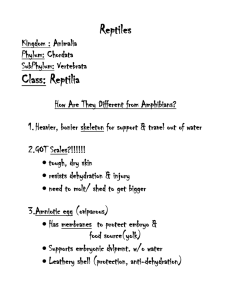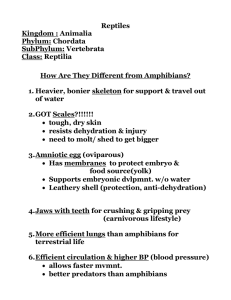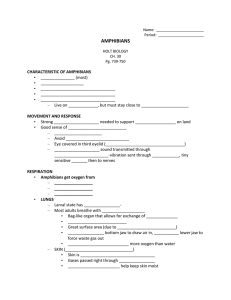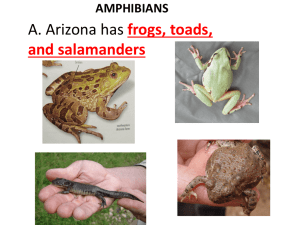Amphibian ADAPTATIONS
advertisement
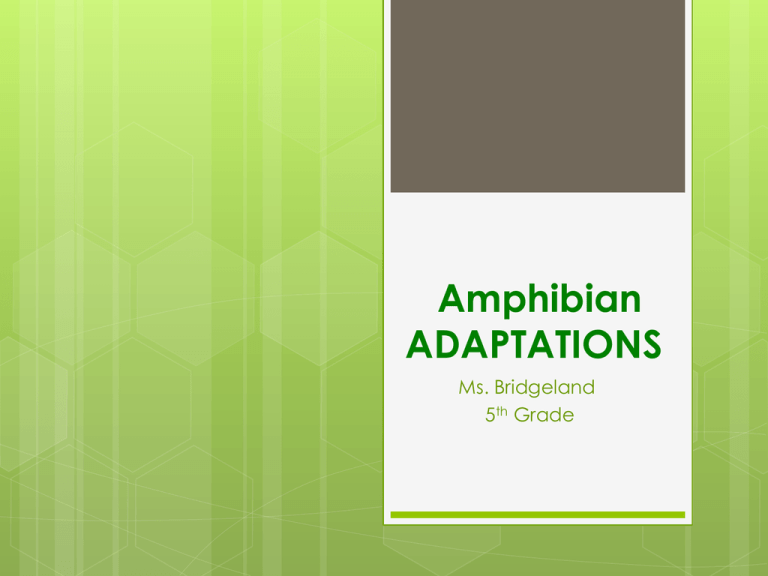
Amphibian ADAPTATIONS Ms. Bridgeland 5th Grade Stage 1: Adult frogs Stage 2: Frogs lay eggs in water, which then are fertilized. *How are Amphibian Eggs different from other eggs? -They do NOT have a shell, but instead a jelly-like protective coating Stage 3: Larvae After a few days, larvae wriggle out of the protective jelly that coats the egg and begin a free-swimming, fishlike life The larvae of a frog or toad is called tadpole. As they grow, larvae undergo a ______________________? Metamorphosis A process where an animal develops after birth or hatching, involving a sudden change in the animal’s structure Stage 4: Larvae develops hind (back) legs Stage 5: Front legs develop Stage 6: Frog loses tail and becomes a mature adult Amphibians: ADAPTATIONS What is an adaptation? Once amphibians are adults, what new adaptations do they need to live on land? Adaptation: OXYGEN While amphibians are larvae, (example tadpoles), how do they breathe? Once, they are on land, how do they breathe? Amphibians must get oxygen from the AIR instead of the water once they are on land During metamorphoses, amphibians lose their gills and develop LUNGS. What two gases are exchanged through the lungs? OXYGEN and CARBON DIOXIDE Adaptation: Circulatory System A tadpole’s circulatory system is similar to a fish: it has a single loop and a heart with 2 chambers Adult amphibians have two loops and a heart with three chambers. Atria: upper chamber of the heart that receives blood. Ventricle: the lower chamber where oxygen rich and oxygen-poor blood mixes –blood moves from the atria to this lower chamber Far left = fish circulatory system Middle = amphibian circulatory system Adaptation: Movement Some frogs have sticky pads on their toes to climb trees Others have webbed feet for swimming Adaptation: Obtaining Food Tadpoles are HERBIVORES (only eat plants Adult salamanders, frogs, and toads are CARNIVORES Frogs and toads WAIT for their prey Salamanders AMBUSH their prey (chase after their prey) Adaptation: Body Structure Adult amphibians are vertebrates and have strong skeletons to support their body against the pull of gravity What are two reasons that amphibians might become endangered? Destruction of their habitats= when a swamp is filled in or a forest is cut, an area that was moist, or more wet, becomes drier. Most amphibians cannot live in dry, sunny areas. Pollution = pollution in water (pesticides and chemicals damage the skin and eggs of amphibians)
